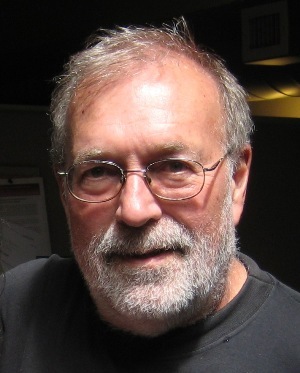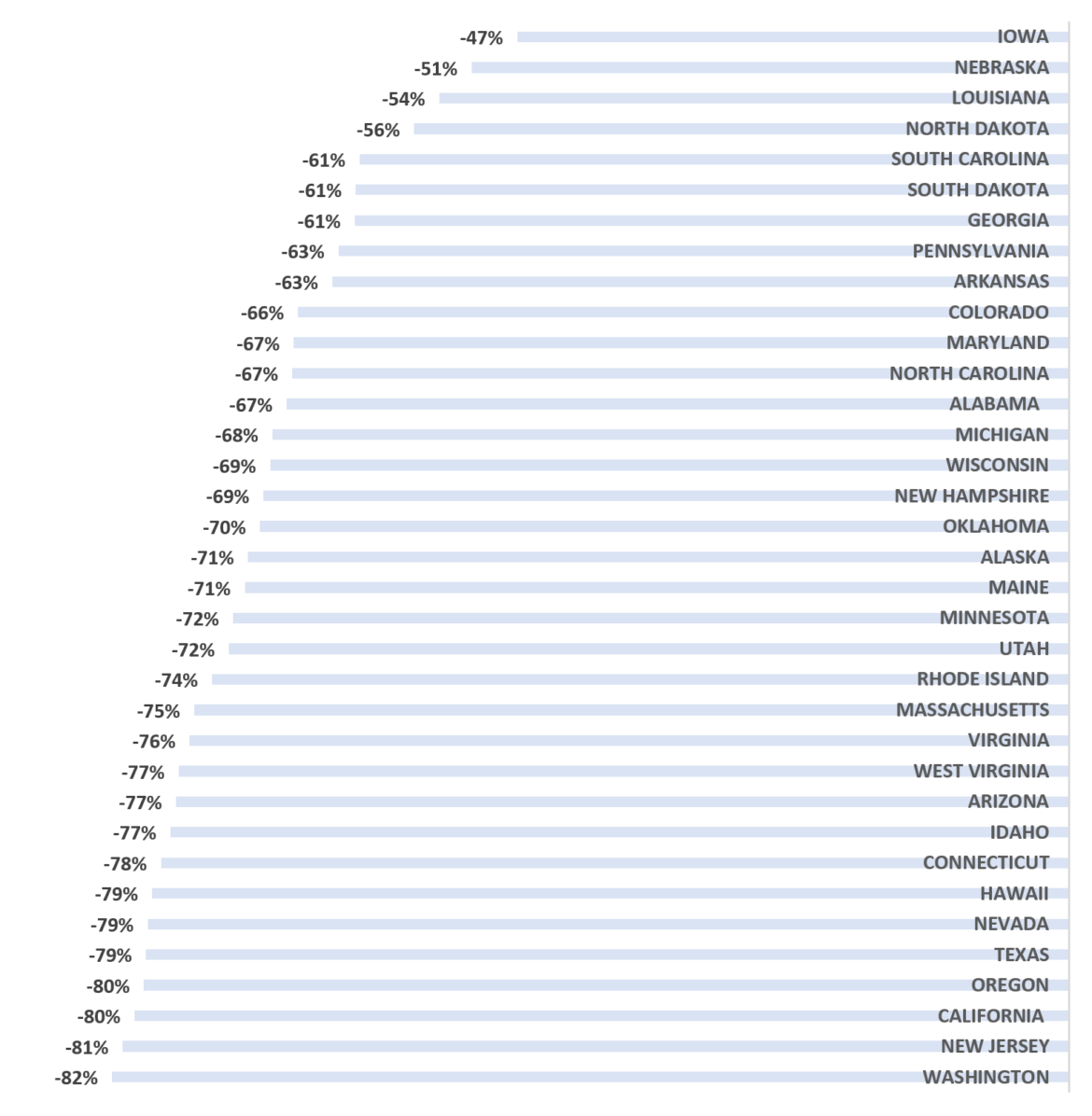 In 1990, in California’s 15 largest cities, 373 youths (in a population ages 10 to 17 of 850,000) were arrested for homicide. In 2015, in those same cities (now with 1.1 million youth), 21 youths were arrested for homicide — a rate decline of 94 percent.
In 1990, in California’s 15 largest cities, 373 youths (in a population ages 10 to 17 of 850,000) were arrested for homicide. In 2015, in those same cities (now with 1.1 million youth), 21 youths were arrested for homicide — a rate decline of 94 percent.
Over the last 25 years, gun killings of teenagers in California’s urban centers fell nearly 80 percent; in New York City, they declined by 90 percent.
Such impossible decreases look like typos, but they’re real. They are repeated in city after city and state after state, where growing, racially diversifying youth populations accompany astonishing reductions in crime and other serious problems.
The millennial generation, forecast to bring “adolescent superpredators,” instead brought a stunning anti-crime revolution that challenges long-held assumptions.
From 1990 to 2016, juvenile arrest rates declined by 73 percent nationally, including large declines in all reporting states. Arrests for violent offenses plunged by two-thirds. Homicide arrests of youth decreased from nearly 4,000 per year in the early 1990s to under 900 in 2016. Twenty of the 35 reporting states – including California, Texas, New Jersey, and Michigan – saw youth homicide arrests plunge 75 percent or more.
In California, a harbinger of national trends, the justice system is rapidly disappearing from young lives. As the youth population grew by one million from 1980 to 2016 and became increasingly diverse, juvenile arrests plummeted from 286,000 to 63,000. All offenses — felony, misdemeanor and status — have fallen to all-time lows. California’s state youth correctional system, the Division of Juvenile Justice, has seen its budget cut 70 percent since 1995 as youth incarceration dropped 93 percent and eight of 11 state detention facilities closed. In juvenile halls and camps, more than 7,000 beds lie empty.
No one knows why these hugely encouraging trends are happening. Instead, we’re seeing more recycled "teenage brain” and “adolescent risk" nonsense of the type that has proven devastatingly wrong and perpetrated destructive policies. Like a Greek play with predetermined lines marching to inevitable tragedy, we let outmoded agendas and prejudices stifle honest debate again and again.
Figure 1. Declining rates of criminal arrests of youth (under age 18) by state, 2016 v 1996 (includes all violent, property, drug, sex, other felonies and misdemeanors, and status offenses).

Source: FBI, Uniform Crime Reports, 1995, 2016. Notes: This figure includes the 35 states with reports to UCR for both 1996 and 2016. Arrest totals are adjusted by the proportion of jurisdictions reporting to UCR by state and year. U.S. Bureau of the Census data for populations ages 10-17 are used to calculate rates.
Even though 21 percent of teens live in poverty compared to 11 percent of middle-agers, more Californians age 40-49 (186,000 in 2015) and 50-59 (128,000) are now getting arrested for felonies and misdemeanors than those under age 20 (123,000 in 2015; 105,000 in 2016). Adolescents can no longer be called “crime-prone.” Crime rates among 18- to 19-year-olds resemble those of 35-year-olds; age 15-17 is like 50.
It’s a whole new world. How are authorities responding to the youth crime revolution’s exciting new opportunities? The prevailing view pretends the decadeslong plummet in crime by youth isn’t happening; that crime, guns and violence remain youthful stupidities. Reading major reports and commentaries these days is like retreating 20, 50, even 100 years into the past.
As teenage crime falls to historic lows, backwards-looking interests are reviving 19th-century myths that “teenage brains are neurologically wired" and “biologically driven" to crime and risk as some "new science." Malarkey. Real scientific reviews show that the functional Magnetic Resonance Imaging (MRI) underlying “brain science” cannot be reliably interpreted or replicated, invalidating thousands of studies.
The premature embrace of poorly grounded psychological and biological notions has the potential to harmfully expand youth and young adult detention by justifying investment in new and “better” lock-ups. For example, California hired a private firm (Campbell Consulting) to rehash developmental clichés and recommend yet another set of “therapeutic” prisons while ignoring young people’s massive crime drop.
Demeaning all 60 million youth and young adults as brain-miswired criminals in order to win lenient treatment for the dwindling few who commit serious crimes isn’t reform — it’s demagoguery. Self-flatteries that “adolescents are not like adults,” while great fun at conference workshops, dodge the uncomfortable reality that crime by youth is a function of adult-imposed poverty, abuse and its trauma sequelae, and troubled caretakers, not being young.
The few commentators who admit real-life trends typically credit their local initiative or pet solution. However, we now see there was no unique Minneapolis gun-violence reduction or “Boston Miracle.” (Nor can my group take credit for the unheralded “San Francisco miracle:” juvenile murders down 80 percent from 1992 to 1999, including 15 months with zero under-16 gun killings). Crime and shootings among youth fell substantially everywhere regardless of what locals did.
The behavior of young people themselves brought down crime and boosted education achievement dramatically. How else do we explain huge drops in youth crime, violence, murder and gun killings in Idaho and Connecticut, West Virginia and Washington, Oklahoma and California, New Jersey and Utah — states with widely varying conditions and policies? We elders did little to relieve unconscionable youth poverty, student debt and addiction and crime epidemics afflicting their parents. Grabbing credit for improvements sabotages reasoned evaluation.
This isn’t “superpredator” 1995, “broken-windows” 1982 or “biological-determinism” 1895. Is the adult brain capable of comprehending changed realities, or is it doomed to lag decades behind, indulging cosmetic system-tinkerings and pleasing orthodoxies to preserve archaic institutions?
Of course we can change. Biological determinism doesn’t dictate thinking, young or old. We need the dynamic, modern discourse 2017’s young people deserve.
Mike Males is senior research fellow for the Center on Juvenile and Criminal Justice in San Francisco. He is author of “Teenage Sex and Pregnancy: Modern Myths, Unsexy Realities.”
Pingback: More States Need to Halt Prosecution of Youth as Adults - The ALI Adviser
Successful reduction of juvenile crime, in some instances, can be attributed to successful, often grass root services provided by Peer/Teen/Youth Courts that provide, at the earliest possible juncture when a young person veers away from law abiding behavior, critical services that can greatly reduce the chances of escaling delinquency. That said, statistics can also be very skewed by programs like Florida’s DJJCivil Citation program that, by statute, allows juveniles up to 3 misdemeanor opportunities @diversion resulting in those offenses not being documented as crimes. So is juvenile crime actually down or are the statistics misleading?
Some how FLORIDA was not reported. Where did they harvest the information and can it be verified? Anyone can slap together a report. Think Forensic and do your research.
Florida is not included because it failed to report arrests to UCR in 1996.
Is there information about how many juveniles have been waived to adult jurisdiction over this same time period?
Very few in California. In 2016, out of 41,000 court dispositions of juveniles, 376 were by adult criminal courts. Adult-court referrals have plummeted over the years. See Juvenile Justice in California, on the state’s Open Justice webpage.
Thanks! And for the great article as well. I’m fighting that proposed new crazy deal in CA.